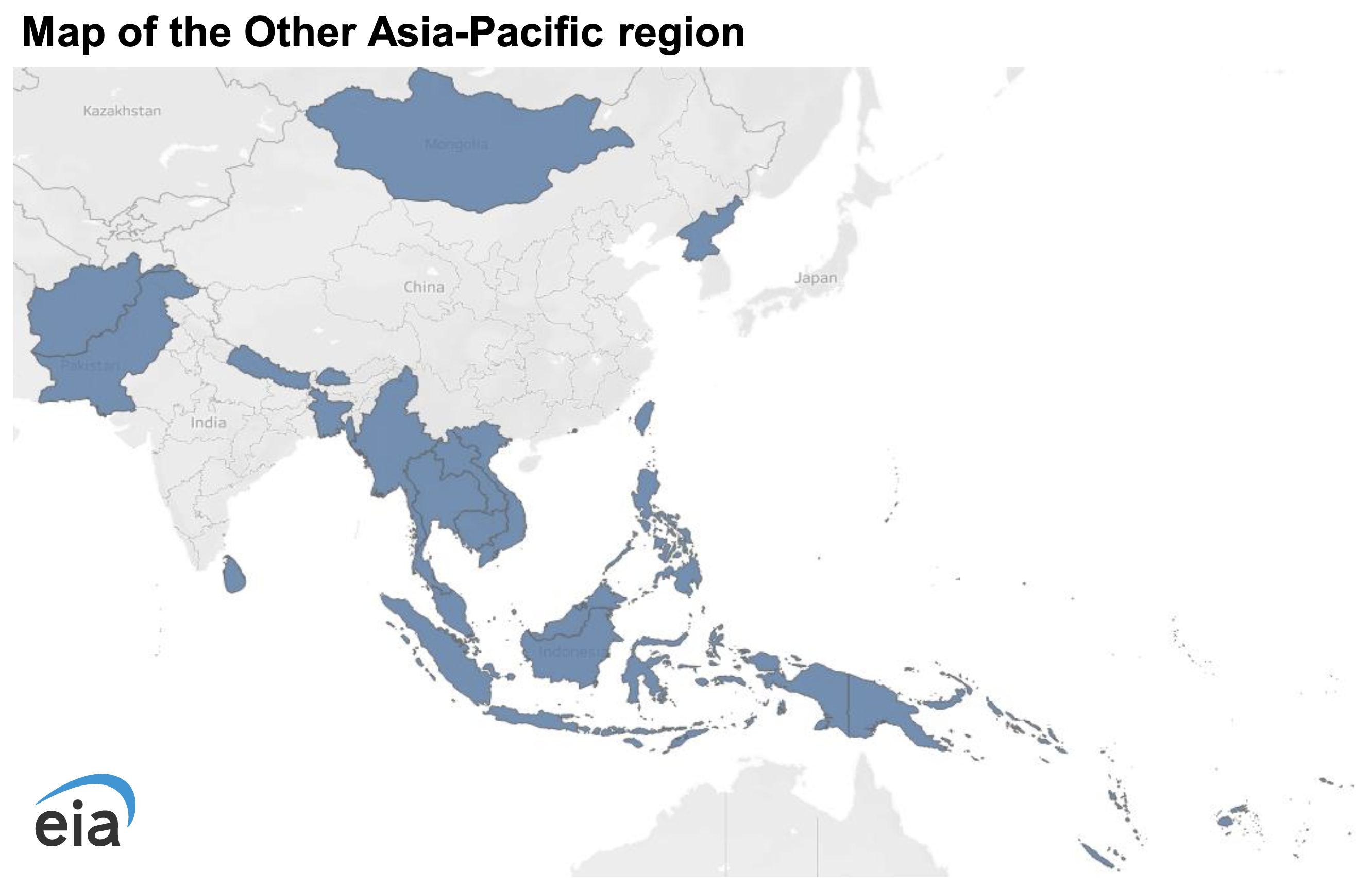Sign up for daily news updates from CleanTechnica on email. Or follow us on Google News!
We project low zero-carbon technology costs will drive substantial growth in zero-carbon electricity capacity and generation and limit growth in fossil fuel-fired generation in parts of Asia between 2030 and 2050 in our International Energy Outlook 2023 (IEO2023). In the region we call Other Asia-Pacific (OAS), we project the electric power sector’s CO2 emission annual growth rate to be the highest in the world between 2022 and 2050 across all cases.

Deployment of zero-carbon technology—which includes renewables, nuclear, and battery storage—in OAS is more sensitive to cost changes than in most other regions of the world in our model. OAS is made up of 41 countries and areas. Among those, the 10 countries in the Association of Southeast Asian Nations play a major role, recently making up nearly two-thirds of the region’s electricity generation, based on our latest International Energy Statistics data.

IEO2023 examines seven cases with differing assumptions. In each case, we consider only current laws and regulations. The Low Zero-Carbon Technology Cost case assumes a more rapid cost decline compared with the Reference case: a subset of zero-carbon technologies—wind, solar, battery storage, and nuclear—reach 40% lower costs by 2050. The High Zero-Carbon Technology Cost case assumes no cost reduction from 2022.
Electricity generation using zero-carbon technology grows most rapidly in OAS in the Low Zero-Carbon Technology Cost case, indicating stronger growth when technology costs are lower than in other projected cases. Fossil fuel generation was lowest in this case.
Even though OAS contributed less than 7% of global electric power sector CO2 emissions in 2022, we project its share could rise to 12%–14% by 2050. Electric power sector CO2 emissions in this region stabilize starting in the 2030s in the Low Zero-Carbon Techlogy Cost case; in all other cases, they continue to increase.
The trajectories for electricity generation growth diverge from 2030 onward in our cases. In the Low Zero-Carbon Technology Cost case, increases in zero-carbon technology generation alone meet almost all the additional electricity demand between 2030 and 2050. Conversely, in the Reference and High Zero-Carbon Technology Cost cases, both zero-carbon technology and fossil fuel-fired generation continue to increase throughout the period.

Capacity of zero-carbon technologies in the OAS region varies notably across cases, and we project it will be nearly five times larger in 2050 compared with 2022 in the Low Zero-Carbon Technology Cost case. Across all cases, we project that 88%–95% of the new zero-carbon capacity that is built through 2050 is solar, wind, and hydroelectricity, 5%–11% is battery storage, and less than 1% is nuclear. Combined fossil fuel capacity, which includes coal, natural gas, and liquid fuels capacity in OAS, is projected to be relatively stable through 2050.
Principal contributor: Singfoong “Cindy” Cheah, Courtesy of U.S. EIA.
Have a tip for CleanTechnica? Want to advertise? Want to suggest a guest for our CleanTech Talk podcast? Contact us here.
Latest CleanTechnica TV Video
I don’t like paywalls. You don’t like paywalls. Who likes paywalls? Here at CleanTechnica, we implemented a limited paywall for a while, but it always felt wrong — and it was always tough to decide what we should put behind there. In theory, your most exclusive and best content goes behind a paywall. But then fewer people read it!! So, we’ve decided to completely nix paywalls here at CleanTechnica. But…
Thank you!
CleanTechnica uses affiliate links. See our policy here.




